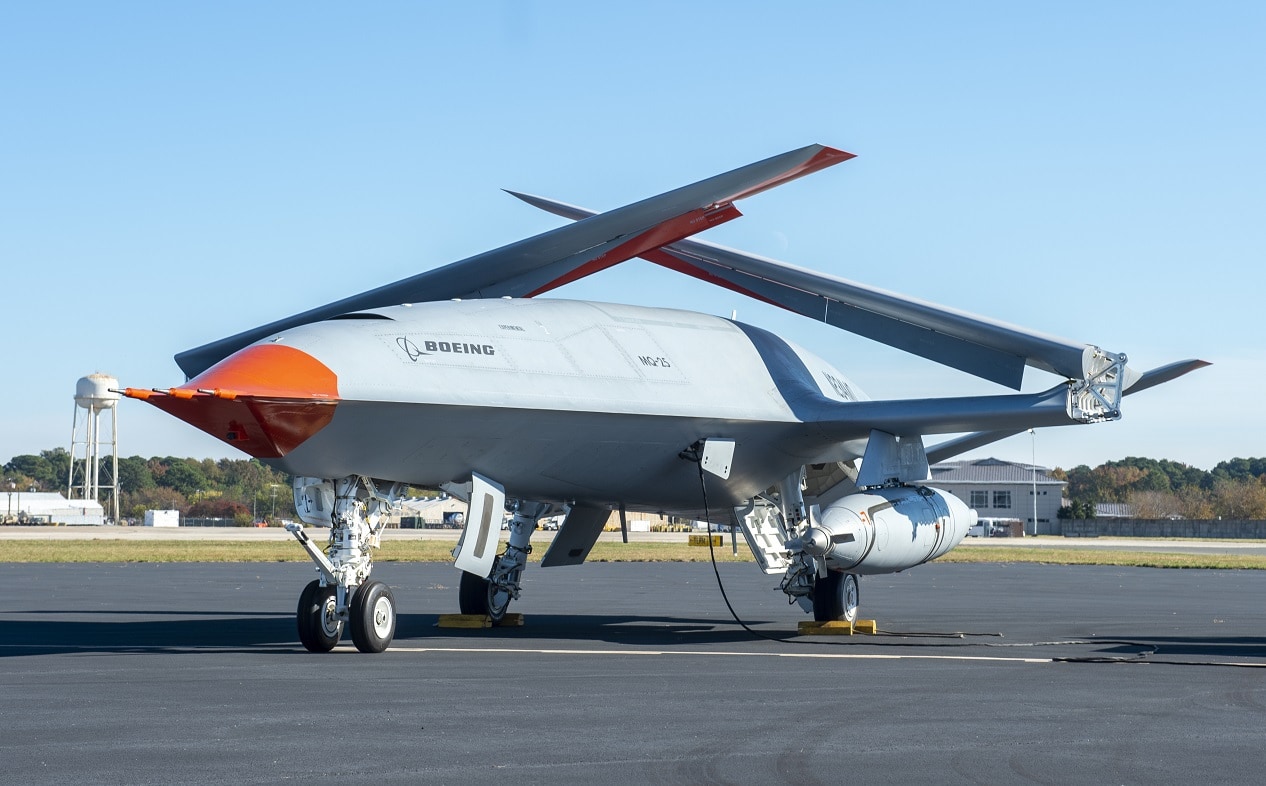Recently, the MQ-25 Stingray finished its first demonstration onboard an aircraft carrier.
The test demonstrated that the unmanned aerial drone could move seamlessly and safely on the aircraft carrier’s deck while being controlled remotely by its operators. This is a significant milestone for the Navy’s future air-refueling platform.
Aircraft Carrier Operations
For the past several weeks, the MQ-25 Stingray has been conducting flight operations onboard the USS George H.W. Bush aircraft carrier. If the aircraft ends up passing all of the qualifications and enters service, it will become the first operational carrier-based unmanned aerial vehicle in the world.
“This is another significant step forward in demonstrating MQ-25’s integration into the Carrier Air Wing on the flight deck of our Fleet’s aircraft carriers. The success of this event is a testament to the hard work of our engineers, testers, operators and the close collaboration and teaming from Naval Air Force Atlantic and the crew aboard CVN 77,” Captain Chad Reed, the Unmanned Carrier Aviation program manager, said in a press release.
During the testing, the MQ-25 used the ramp from the aircraft cargo area to the deck and then moved around alongside parked fighter jets. The flattop’s “yellow shirts,” the sailors responsible for directing traffic on an aircraft carrier deck, directed the unmanned aerial vehicle around. But instead of a pilot, the “yellow shirts” communicated with the operator of the MQ-25, who was standing beside them.
“The Navy gave us two key performance parameters for the program – aerial refueling and integration onto the carrier deck. We have shown that the MQ-25 can meet both requirements, and we’ve done it years earlier than traditional acquisition programs,” Dave Bujold, the Boeing MQ-25 program director,” stated.
Jim Young, the MQ-25 chief engineer, highlighted the work that had to be done to make the MQ-25 compatible with the strict procedures that the U.S. Navy requires for its carrier-based aircraft.
“The Navy has a rigorous, well-established process for moving aircraft on the carrier. Our goal was to ensure the MQ-25 fits into the process without changing it. From the design of the aircraft to the design of the system moving it, our team has worked hard to make the MQ-25 carrier suitable in every way,” Young said.
The MQ-25 Stingray
The MQ-25 Stingray came out of the Carrier-Based Aerial-Refueling System (CBARS) program that has been in development since the early 2000s.
The unmanned aerial vehicle’s primary mission set will be to provide an aerial refueling option for the carrier air wings, with a secondary mission set of providing intelligence, surveillance, and reconnaissance (ISR) capabilities.
Although the MQ-25 achieved a significant milestone during the deck handling operations, it has still to launch from an aircraft carrier.
The Navy plans for the MQ-25 to complement its future air wing, which will be comprised of the F-35C Lighting II, F/A-18E-F Super Hornet, EA-18G Growler, and E-2D Advanced Hawkeye.
For over two years, Boeing has been working with the Department of Defense and the Navy to make the dream of an unmanned aerial vehicle that can refuel manned aircraft a reality. Thus far, the MQ-25 has refueled mid-air the F-35C, F/A-18 Super Hornet, and E-2D Advanced Hawkeye.
Now 1945s National Security Columnist, Stavros Atlamazoglou is a defense journalist and military expert specializing in special operations, a Hellenic Army veteran (national service with the 575th Marine Battalion and Army HQ), and a Johns Hopkins University graduate.

